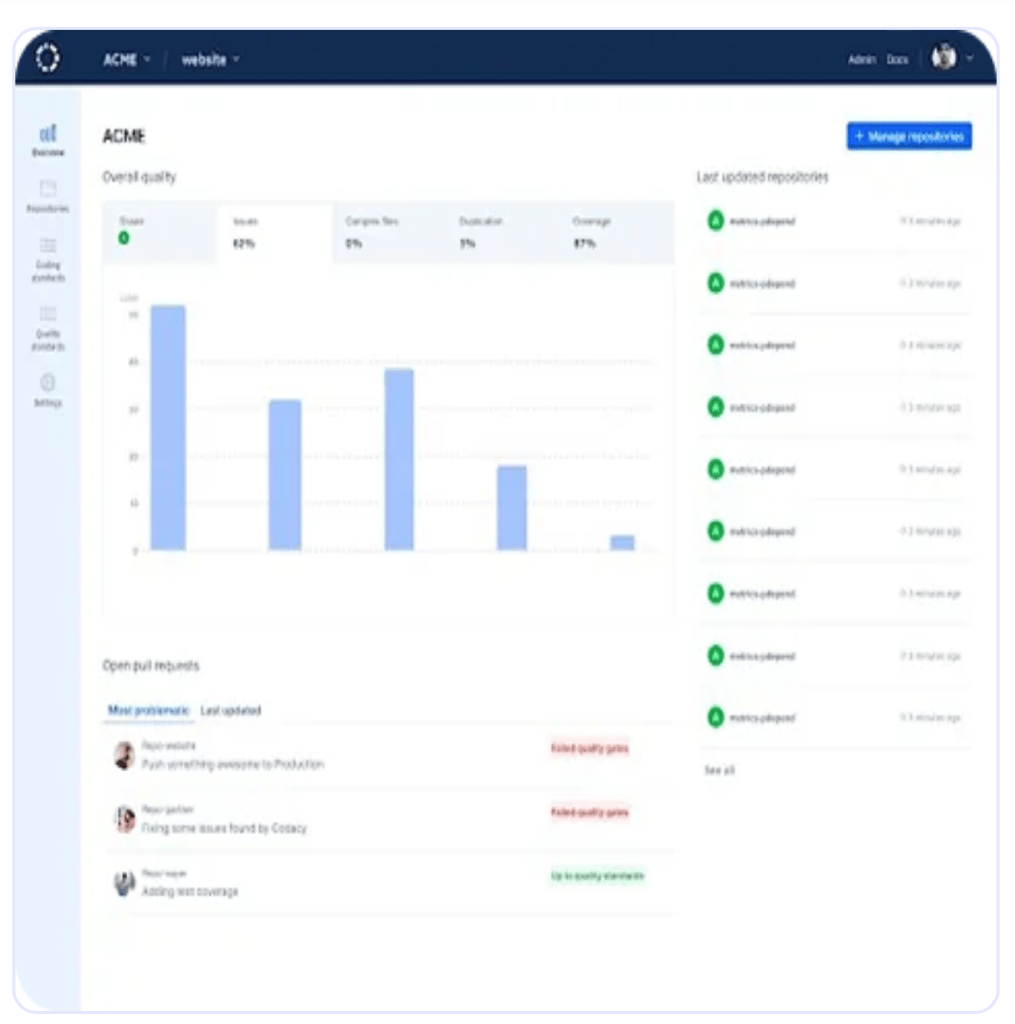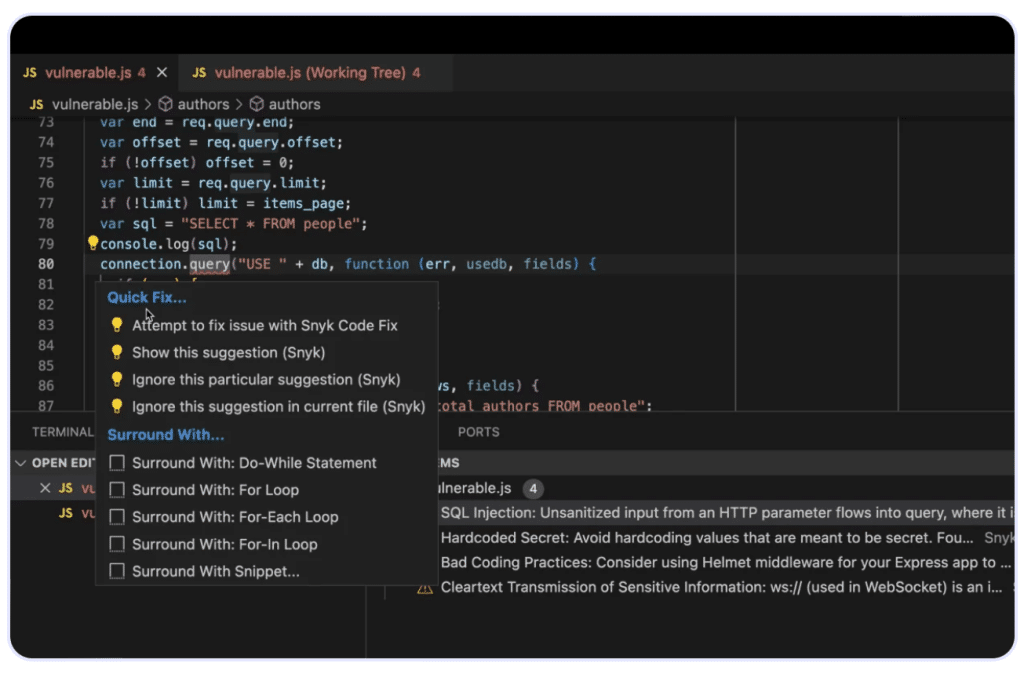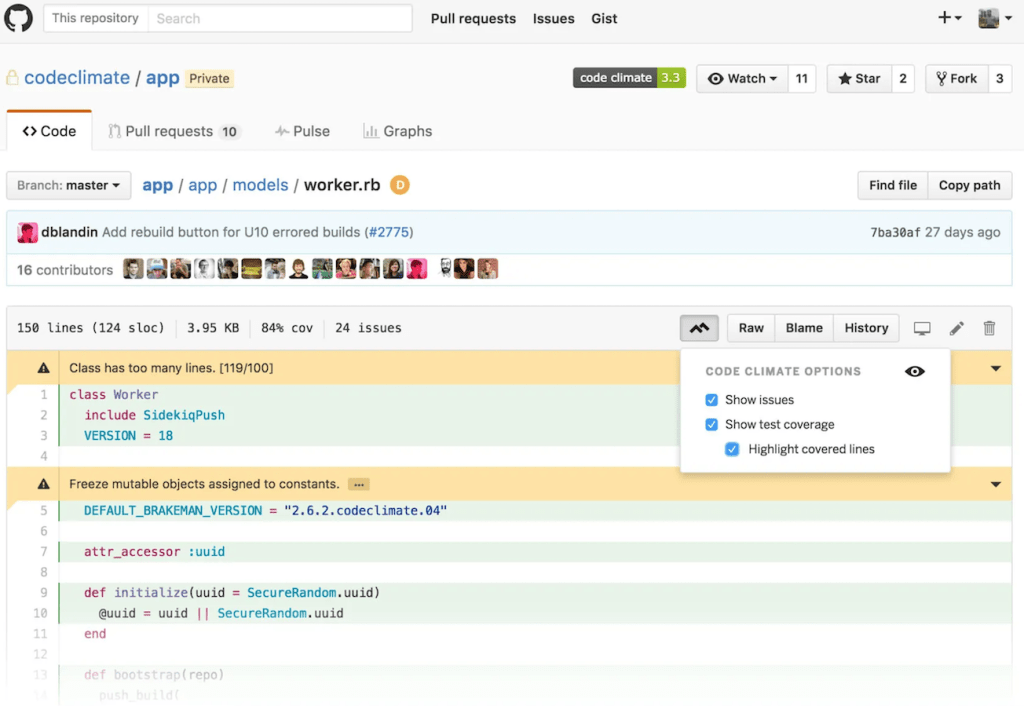What Is AI Code Review?
Artificial Intelligence (AI) code review is an automated process that examines the code of a software application for potential problems and inefficiencies. It involves the use of machine learning models to identify and fix coding errors, optimise code performance, and make recommendations for improvements.
The power of AI code review lies in its speed and scalability. It can analyse vast amounts of code in seconds, identifying patterns and anomalies that would be difficult, if not impossible, for a human to spot. Moreover, it can do this consistently and accurately, without the fatigue or bias that can affect human reviewers.
This innovative approach to code review is transforming the way developers write and refine code, making it possible to produce higher-quality software, faster than ever before.
AI Developers should be aware:
Hiroshima Process International Code of Conduct for Advanced AI Systems
Key Components of AI Code Review
Static Code Analysis
Static code analysis involves examining the code without executing it, to identify potential issues such as syntax errors, coding standards violations, and security vulnerabilities.
Static code analysis is particularly useful for large and complex codebases. It can quickly scan through thousands of lines of code, pinpointing potential issues and providing detailed reports. AI algorithms can then use this information to make recommendations for improvements.
Dynamic Code Analysis
Unlike static code analysis, dynamic code analysis involves executing the code and observing its behaviour. This allows the AI to identify runtime errors, performance issues, and other problems that may not be apparent from the code itself.
Dynamic code analysis is crucial for understanding how the code interacts with external systems and resources. It provides a more complete picture of the code’s behaviour, enabling the AI to make more informed and accurate recommendations.
Rule-Based Systems
Rule-based systems use a set of predefined rules to analyse the code and identify potential issues. They provide a consistent and reliable baseline for code analysis. They ensure that the code adheres to established coding standards and best practices. A common example of a rule-based system is a linter, which examines code for syntax errors or deviations from coding style guidelines.
Natural Language Processing (NLP) Models
NLP models are at the heart of AI code review. These models are trained on large datasets of code, learning to recognise patterns and anomalies that indicate potential problems or inefficiencies.
Over time, these models become increasingly adept at identifying and fixing issues in the code. They can even learn from the feedback and corrections of human reviewers, continuously improving their performance.
Large Language Models (LLMs)
Code review tools are starting to incorporate Large language models (LLMs), like GPT-4. These models can understand the structure and logic of the code more deeply than traditional machine learning techniques, which helps in identifying more nuanced anomalies and errors.
Moreover, LLMs can also generate human-like comments and explanations for the code, making the review process more understandable and accessible to developers. This can be especially useful for novice developers who are still learning and can benefit from the detailed feedback provided by these models.
Furthermore, LLMs are language agnostic, meaning they can work with virtually any programming language. This makes them a versatile tool in code review processes, capable of handling diverse codebases and contributing to more efficient and thorough reviews.
Further reading: Deep learning vs. machine learning the difference
Advantages of AI for Code Review
Efficiency and Speed
Traditional code review processes can be time-consuming and labour-intensive, often requiring multiple reviewers to examine the same code. With AI code review, the process can be completed in a fraction of the time. AI can quickly scan through the code, identify potential issues, and make recommendations for improvements.
Consistency and Accuracy
Human reviewers can be influenced by fatigue, bias, or other factors, leading to inconsistent or inaccurate reviews. AI, on the other hand, can analyse the code consistently and accurately, regardless of the size or complexity of the codebase. This ensures that more issues are identified and addressed, improving the overall quality of the software.
Detection of Hard-to-Find Errors
AI code review is also highly effective at detecting errors that are difficult to spot through manual review, either because they are subtle or because they only occur under certain conditions.
By analysing the code in depth and considering a wide range of scenarios, AI can identify these elusive errors and suggest fixes. This reduces the risk of bugs slipping through the cracks and causing problems down the line.
Enhanced Learning and Skill Development
AI code review can serve as a valuable learning tool for developers. By providing detailed feedback and recommendations on a wider variety of coding issues and errors, and providing this feedback instantly as developers are coding, AI can help developers improve their skills and learn new techniques.
Limitations and Concerns with AI-Based Code Review
Over-Reliance on AI Tools
One of the most significant concerns with AI code review is the potential for over-reliance on these tools. As AI becomes more sophisticated, there is a danger that developers will start to depend on these tools too much, neglecting their judgment and expertise. This can lead to a lack of understanding of the underlying code, making it more difficult to debug and maintain.
Moreover, while AI code review tools can help identify potential issues, they cannot replace a developer’s understanding and intuition. AI can’t fully understand the business logic behind the code or the specific requirements of a project. Therefore, while these tools can be a valuable aid, they should not be seen as a replacement for human developers.
Limitations in Understanding Context and Intent
Another limitation of AI code review is its inability to understand context and intent. When a developer writes code, they do it with a specific intention in mind. They are trying to solve a particular problem or implement a specific feature. However, an AI code review tool can only mechanically analyse the code, without understanding the broader context.
This lack of context can lead to false positives, where the tool flags code as problematic when it isn’t. It can also miss issues that a human reviewer would spot because they understand the intent behind the code. Therefore, while AI code review can be a helpful tool, it still has a long way to go before it can fully replace human code review.
Handling of False Positives and False Negatives
False positives occur when a code review tool flags code as problematic when it’s not, while false negatives occur when the tool misses actual issues.
False positives can be particularly frustrating, as they can lead to unnecessary work and can undermine confidence in the tool. On the other hand, false negatives can be even more problematic, as they can lead to bugs and security vulnerabilities being missed.
To overcome these challenges, AI code review tools need to continuously learn and improve. This can be achieved through machine learning algorithms that learn from past mistakes, as well as through feedback from developers.
Popular AI Code Review Tools
Here are popular tools you can try to get started with AI code reviews.

Codacy is an AI-powered code review tool that provides automatic code review for more than 30 languages. The platform integrates with GitHub, Bitbucket, and GitLab, enabling developers to find and fix issues directly from their repositories.

Codacy’s AI engine can identify code patterns, detect bugs, and identify security vulnerabilities and code duplication. It also offers a feature that allows developers to define their quality standards and enforce them across the team. This means that Codacy not only helps in maintaining code quality but also ensures consistency across the team’s coding style and practices.
What sets Codacy apart is its user-friendly interface and dashboards. They provide visual insights into your codebase, highlighting areas of improvement and tracking your progress over time.

DeepCode is an AI code review tool that uses machine learning algorithms to learn from millions of software development repositories. This large dataset allows DeepCode to provide highly accurate suggestions and find potential issues that human reviewers might overlook.

DeepCode supports multiple programming languages, including Java, JavaScript, TypeScript, Python, and C++. It can analyse your code in real time, providing instant feedback and highlighting potential problems. In addition to spotting errors, DeepCode suggests solutions, making it useful for developer education.
One of the key features of DeepCode is its ability to detect subtle, hard-to-find bugs, security vulnerabilities, and performance issues.

Code Climate is another AI code review tool that can help you evaluate the maintainability of your code. Code Climate analyses your codebase and assigns a maintainability score, giving you a quick overview of your code’s health.

Code Climate supports a wide range of programming languages and integrates with GitHub, Bitbucket, and GitLab. Its AI engine identifies complex code, duplication, and potential bugs in real time. It also offers automated code review comments, directly highlighting areas of concern on your pull requests.
Code Climate focuses on long-term code health. It provides insights into technical debt, helping teams understand the potential future impact of their coding decisions and improve the maintainability of their code.





